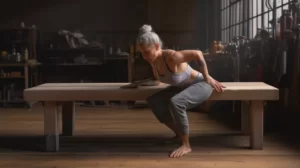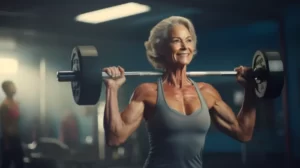Stretching alone won’t make your legs supple and ready for exercise. You might need to work through old injuries, release scar tissue adhesions, and trigger points. A gym, massage therapist, and physical therapist might be needed, but fortunately, a device called a foam roller can efficiently prepare your legs for workouts. In this article, you’ll learn how to find the right foam roller, when and how to use it, and the rolling techniques to target your hamstrings, IT band, and quadriceps.
Finding the right foam roller
Different varieties of foam rollers are available. The more common ones have a smooth surface, with red ones being softer and black ones denser. The softer rollers are suitable for those who are in pain, extra sore, or not used to muscle stressors, while the denser rollers are great for those who need to dig deeper into the muscle for a more aggressive session.
Another type of roller is knobby with deep sturdy-foam crevices, called rumble rollers. These aren’t recommended for first-timers but are perfect for people accustomed to putting their body under pressure. Rumble rollers are used for “flossing” the muscles, meaning pressing through trigger points and frozen fascia.
When to use foam rollers
Use foam rollers before your workout to loosen muscle and fascia and bring blood flow to the muscles. Doing this prepares your body for the workout, reducing the chance of injury. After a workout, rolling helps cool down the muscles and maintain pliability instead of stiffening up.
How to roll properly
To start rolling:
- First, get into the proper position by lining up the foam roller under the belly of the muscle you intend to roll. Avoid joints or bony parts as this can cause inflammation and injury.
- Apply pressure to the muscle and slowly roll along the length of the muscle without rolling onto joints.
Now, let’s begin with specific rolling techniques.
Hamstring rolling
- Sit on the floor with legs in front, knees slightly bent, and the foam roller directly under the belly or center of the hamstring muscles.
- Lower your hamstrings by placing your bodyweight down onto the foam roller, lifting your feet up by extending your legs, and placing your hands behind you for balance and support.
- Roll forward and backward along the length of the muscle. If you need more pressure, stack one leg over the other to provide more bodyweight and pressure.
Do 10 passes on both legs together or individually.
IT Band rolling
- Lie on your side with one leg on the roller and the other with knee bent and in front of you for support. The arm on the same side as the rolling leg is used for balance and motion.
- Roll up and down the IT band, focusing on the belly of the muscle.
Do 10 passes on each leg.
Quadriceps rolling
- Rest your legs on top of the roller, body facing toward the ground (as if you’re in a push-up position), with the foam roller in the center or belly of the quadriceps.
- Use your arms to adjust how much body weight is on the roller.
- Roll back and forth slowly.
If you need more pressure, stack (cross) one leg on top of (over) the other and roll each leg 10 times individually.
Try these foam rolling techniques to prepare yourself for exercise or help your body recover after workouts. Remember, it’s essential to find the right roller for your needs and use the proper technique to target specific muscle groups effectively. Happy rolling!



